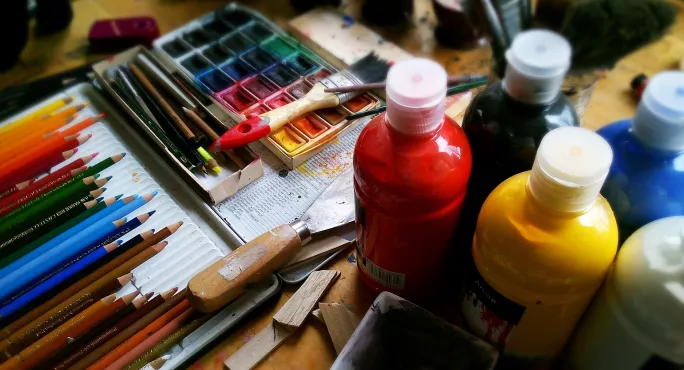- Home
- How to put art at the heart of science - at all ages
How to put art at the heart of science - at all ages

Should a school have a Steam department or a Stem department?
It’s a question that I hear - and get asked - a lot.
Surely, say those who lean towards the latter, the arts are intuitively already part of science, technology, engineering, and maths? Why do they need highlighting?
But I’d argue it’s not obvious to all, and there is importance in highlighting and integrating the arts across a Stem curriculum.
Art is the heart of life
John Maeda, former president of the Rhode Island School of Design described how innovation (in the sciences) comes from human experiences, and human experience happens through engaging with the arts.
When we start to recognise the arts in all we do, we begin to find ways to nurture them and teach in a cross-curricular fashion. This is the heart of Steam.
Creativity, like science, is intrinsic in all children and should be nurtured and encouraged. A wall of scribbles, viewed with an artistic eye, shows a canvas of storytelling, shape exploration, and colour.
A children’s tea party is an opportunity to practice the social arts while banging saucepan lids. Though headache-inducing, it is an exploration of rhythm, tone, and amplitude.
From this, I think it’s the case then that when it comes to developing opportunities for the integration of arts into science, the advice is to start small and keep it simple.
Think creatively
You could start with a Steam day, where the whole school is off timetable and exploring a solution to a problem posed in a whole school assembly by a visiting expert.
Alternatively, it could extend to an entire week, where children are in groups of mixed ages from across the school working as a community to develop a product or experience to sell at a school fair.
Furthermore, Steam projects don’t always need all elements.
This is where I find most colleagues get confused, “But shouldn’t the arts be in all Steam projects then?” they ask. I say “no,” and “yes”, and “It’s up to you.”
If a learning experience will be a richer experience by integrating the arts, then do it, if not, then don’t. Don’t do it for the sake of it, keep it genuine.
Broadening the learning experience
For example, exploring the parts of a plant in Year 3 is made more memorable if it is teamed with art in a dual-objective approach to planning.
Children can learn to recognise the main parts of flowering plants and explore line and shape together.
Two learning objectives, taught concurrently, assessed with equal weighting, and given equal importance.
Suddenly the class are botanical illustrators, developing a deeper understanding of a plant’s form and function, and using art to draw what they see, not what they think they see.
Or take a Year 6 lesson about algebra. Instead of giving the numerical values a letter, give them a dance move.
Let the children choreograph their equations for their classmates to decode and then dance back their solutions.
Using dance in this way transforms it from a subject that is oft-ignored and showcases the communicative power it can have.
Across the school
Once you’re feeling ambitious, you can get the whole school involved.
For example, inspired by the Take One Picture project from the National Gallery, our school has undertaken a similar program, in collaboration with the Art Institute of Chicago.
My fantastic colleague Justine Domine has spearheaded this project for six years. Each student in the school, from EYFS through to Year 6, interprets the same piece of art, and creates new work inspired by it.
Children use it to inspire writing, science, math, music, dance, and social studies. The whole school focusing on one piece of art brings a sense of community and celebration, highlighting the interconnectedness of all areas of the curriculum.
Why it matters
Overall, through careful planning, bringing Steam into the classroom will allow our students to see the connections between traditionally siloed areas of learning.
After a while, they recognise these links for themselves and become future innovators.
The arts are often stymied at some point in our pupil’s academic career and we need to make sure they recognise them as vehicles for creativity and innovation - permeating through all they do.
Given that Nobel laureates in the sciences are 22 times more likely to be involved with the performing arts (than scientists in general), as educators, we owe it to this generation of pupils to integrate the A in Steam.
Tom Collins is a primary science specialist teacher, and Steam departmental leader at the British International School of Chicago - Lincoln Park
Keep reading for just £1 per month
You've reached your limit of free articles this month. Subscribe for £1 per month for three months and get:
- Unlimited access to all Tes magazine content
- Exclusive subscriber-only stories
- Award-winning email newsletters



